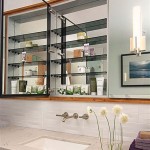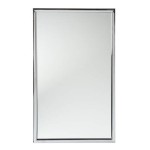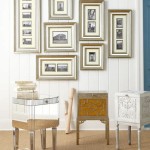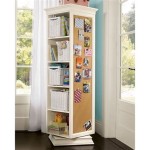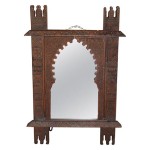Using Liquid Nails on Mirrors
Liquid Nails is a popular brand of construction adhesive known for its strength and versatility. While often used for bonding wood, metal, and other materials, its suitability for mirrors requires careful consideration. This article will explore the factors involved in using Liquid Nails on mirrors, outlining the potential benefits and drawbacks, appropriate product selection, and best practices for application.
Key Considerations for Using Liquid Nails with Mirrors
Several factors influence the success of using Liquid Nails with mirrors. These include the type of mirror, the backing material, the desired mounting surface, and environmental conditions. Choosing the wrong adhesive or improper application can lead to mirror damage, including staining, cracking, or distortion. Careful planning and execution are crucial for a successful installation.
Choosing the Right Liquid Nails Product
Liquid Nails offers a variety of adhesive formulations, not all of which are suitable for mirrors. Some products contain solvents that can damage the mirror's backing or reflective coating. It's essential to select a product specifically designed for mirrors or, at the very least, one that is neutral-cure and compatible with mirror materials. Consulting the manufacturer's specifications and compatibility charts is crucial before making a selection. Examples of suitable Liquid Nails products might include those labeled as “Mirror Adhesive” or explicitly stating compatibility with mirrors and glass. Carefully examine product descriptions for mentions of "non-corrosive" or "safe for mirrors" to ensure compatibility.
Preparing the Surfaces
Proper surface preparation is paramount to achieving a strong and lasting bond. Both the mirror backing and the mounting surface must be clean, dry, and free of dust, grease, or other contaminants. Cleaning with isopropyl alcohol is often recommended. For porous surfaces, applying a primer may be necessary to ensure adequate adhesion. Uneven surfaces may require filling or sanding to create a flat and even mounting plane for the mirror. A smooth, even surface will ensure uniform distribution of adhesive and prevent stress points on the mirror.
Applying the Adhesive
Applying the correct amount of adhesive is essential. Too little adhesive might result in insufficient bonding strength, while too much can squeeze out and create a mess or even damage the mirror. The manufacturer's instructions should be followed precisely regarding bead size and spacing. Common application patterns include a continuous bead around the perimeter of the mirror and several perpendicular beads across the back. A dotted or zigzag pattern may also be sufficient for smaller, lighter mirrors. The goal is to provide enough adhesive for a secure bond without excessive overflow.
Mounting the Mirror
Once the adhesive is applied, the mirror must be carefully positioned on the mounting surface. Firm and even pressure should be applied to distribute the adhesive and ensure proper contact. Depending on the Liquid Nails product used, temporary supports or bracing may be necessary while the adhesive cures. Avoid shifting the mirror after placement, as this could weaken the bond. The curing time varies depending on the specific adhesive and environmental conditions. The manufacturer's instructions provide the recommended cure time, which should be strictly adhered to before removing any supports.
Safety Precautions
Working with adhesives requires appropriate safety precautions. Adequate ventilation is crucial to prevent inhalation of fumes. Gloves should be worn to protect skin from contact with the adhesive. Eye protection is also recommended. In case of accidental skin contact, wash the affected area thoroughly with soap and water. If the adhesive comes into contact with the eyes, flush immediately with water and seek medical attention. Always consult the product's safety data sheet for complete safety information and precautionary measures.
Factors Affecting Adhesion
Several factors can influence the strength and longevity of the adhesive bond. Temperature and humidity play a significant role in the curing process. Extreme temperatures or high humidity can negatively impact adhesion. The type of mirror backing also affects adhesion. Some backings are more porous and receptive to adhesives than others. The surface to which the mirror is being mounted also plays a crucial role. Smooth, non-porous surfaces generally provide better adhesion than rough or porous surfaces. The specific Liquid Nails product selected will also influence the ultimate bond strength, as different formulations have varying adhesive properties.
Alternatives to Liquid Nails for Mounting Mirrors
While Liquid Nails can be a viable option for mounting mirrors in certain situations, alternatives exist. Mirror clips, J-channels, and specialized mirror mounting tapes are commonly used. These methods offer different advantages and disadvantages compared to adhesive mounting. Mirror clips provide a mechanical hold and are often preferred for heavier mirrors. J-channels offer a concealed mounting solution. Mirror mounting tapes can be a convenient option for smaller, lighter mirrors. Choosing the appropriate mounting method depends on the specific application and the desired aesthetic.

Eys Liquid Nails Mirror Aluminium Malaysia Home Improvement S

Eys Liquid Nails Mirror Aluminium 310g Veligaa Hardware

Eys Liquid Nails Mirror Metal And Glass

Framing Out A Mirror That S Mounted On Door Young House Love

Eys Liquid Nails Mirror Metal And Glass

How To Use Mirror Adhesive Silicone
Eys Liquid Nail Mirror Aluminum 75g High Strength Mosaic Tile Wainscoting Glue Adhesive Gam Mozek Cermin Ee Malaysia

Eys Liquid Nails Mirror Aluminium 75g Tube Veligaa Hardware

Eys Liquid Nails Mirror Metal And Glass

Eys Liquid Nails Mirror Aluminium 310g Veligaa Hardware



